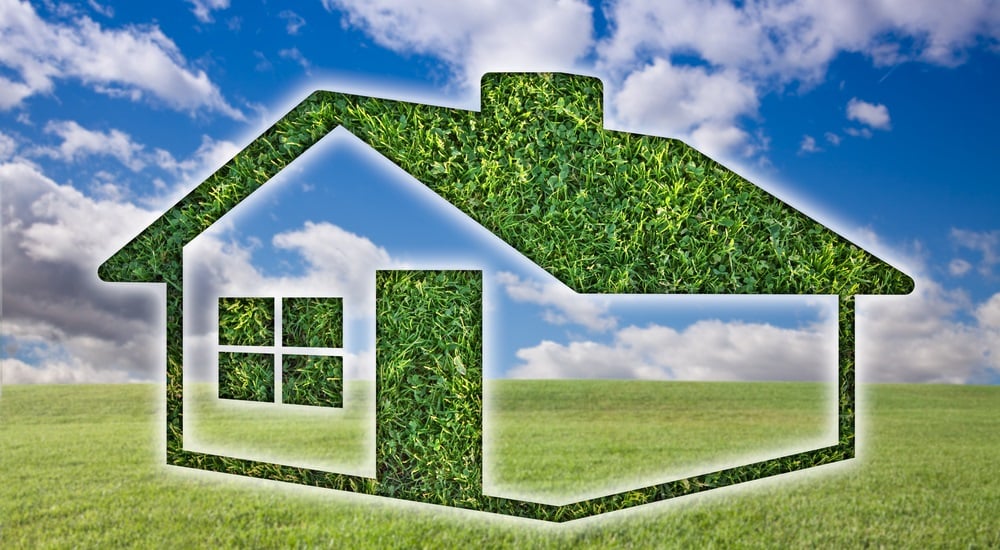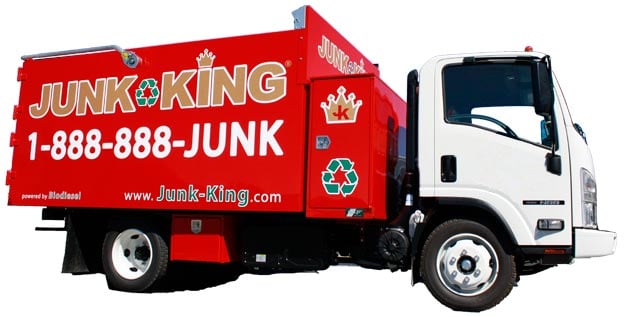
We live in a green and eco-friendly world today. But not all houses are green nor eco-friendly. However, it doesn't have to be hard to change that.
There are dozens of simple changes and additions homeowners and others can make to turn an otherwise "old school" residential structure into a greener and environmentally safer home.
Taking a Hard Look at Your Home's Carbon Footprint and Eco-Friendliness
One of the ways we can gauge the importance of green features in homes is through the "eyes" of real estate professionals.
According to the 2022 REALTORS® and Sustainability Report put out last year by the National Association of Realtors®,
Half of agents and brokers surveyed said they helped a client buy or sell a property with green features during the past 12 months, a notable jump compared to 32% in 2021. Nearly two out of three respondents – 63% – said that energy efficiency promotion in listings was very or somewhat valuable. Over half of agents and brokers – 51% – found that their clients were somewhat or very interested in sustainability. And 35% reported that their multiple listing service features green data fields.
In addition, they found that about three out of four Realtors® – or 77 percent – said that properties with rooftop solar panels were available in their market. These numbers were highest in the West with 89 percent, and the Northeast with 86 percent having rooftop solar panels.
Clearly, the greening of residential structures is a significant movement in America. The question is, for many homeowners and landlords, how green is your home?
For many, the thought of upgrading or making structural changes to bring their older home into a more "green" and environmentally friendly state is overwhelming. Reducing one's residential carbon footprint can seem like a costly endeavor.
However, there are many smaller and cost-effective changes or upgrades that a typical homeowner can do to make their house more eco-friendly and green.
Here are some to consider for your own home:
- Install energy-efficient lighting: Replace traditional incandescent bulbs with energy-efficient LED bulbs. LED bulbs use up to 80% less energy and last longer than traditional bulbs.
- Upgrade to a programmable thermostat: This can help you regulate your home's temperature, and only use energy when you need it.
- Install low-flow showerheads and faucets: Low-flow fixtures can reduce water usage by up to 50% and save energy by reducing the amount of hot water you use.
- Install a water filtration system: This can reduce the amount of bottled water you use, which reduces plastic waste and saves money.
- Use natural cleaning products: You can avoid harsh chemicals that pollute the environment by using natural cleaning products like vinegar, baking soda, and lemon juice.
- Replace old windows: Upgrading to energy-efficient windows can reduce your energy bills by up to 15% and improve your home's insulation.
- Install a rain barrel: Collecting rainwater can be a great way to conserve water and reduce your water bills. You can use this water to water plants or wash your car.
- Plant trees and shrubs: Trees and shrubs can provide natural shade and reduce the amount of energy needed to cool your home. Plus, they provide habitat for wildlife and help reduce air pollution.
A Graphic Look at the State of Green Homes and Eco-Friendly Houses
Of course, it's easy to speak about how we are shifting towards more and more of a sustainable building culture in our society. Green construction practices, LEED structures, and environmental consciousness in design, planning, and building of structures is quite commonplace today.
But the truth is that we have a long way to go.
Here is an infographic we put together to illustrate the "state of things" when it comes to green homes and eco-friendly house construction and retrofitting.

Share this Image On Your Site
The United States is a leading nation in many respects, but in some areas we are still catching up with many European and Asian countries - especially in the realm of green and sustainable home construction.
But there are many things that every homeowner can do to make their residences both greener and reduce their carbon footprint.
Reducing the Dreaded Carbon Footprint One Change at a Time
We've likely all heard the term and perhaps even have a good understanding of what it means. But to make it even more clear, we found this great explanation from the Center for Sustainable Systems:
A carbon footprint is a measure of the amount of carbon dioxide and other carbon compounds emitted due to the consumption of fossil fuels by a particular person, group, etc. It is calculated by summing the emissions resulting from every stage of a product or service’s lifetime. That includes the material production, manufacturing, use, and end-of-life.
For example, if you own a home that burns natural gas, you are producing carbon dioxide and other greenhouse gases that contribute to climate change. The amount of greenhouse gases produced depends on how much fuel you burn and how efficient your home is.
In fact, researchers have found that leaking methane from natural gas-burning stove tops releases the greenhouse-gas equivalent of hundreds of thousands of cars. The majority of methane is released from gas stoves while not in use.
The good news is that most any homeowner can make lifestyle changes and changes in their homes to help reduce their carbon footprint. Here are a few to consider:
- Install solar panels: Consider installing solar panels on your roof to generate clean energy for your home. You can reduce your reliance on fossil fuels and potentially even sell excess energy back to the grid.
- Upgrade to energy-efficient appliances: Upgrading to energy-efficient appliances can reduce your energy consumption and lower your utility bills. Look for appliances with the ENERGY STAR label, which indicates that they meet strict energy efficiency guidelines.
- Use public transportation or bike instead of driving: Try to use public transportation or bike instead of driving alone in a car. This reduces emissions and saves you money on gas and car maintenance.
- Plant a vegetable garden: Growing your vegetables can reduce your reliance on carbon-intensive agriculture and reduce your carbon footprint. Plus, it's a fun way to get outside and connect with nature.
- Reduce meat consumption: Reducing meat consumption, or adopting a plant-based diet, can significantly reduce your carbon footprint. The production and transportation of meat and dairy products contribute to greenhouse gas emissions, and reducing their consumption can help mitigate climate change.
- Use reusable shopping bags: This can help reduce plastic waste and protect the environment. Keep reusable bags in your car, so you always have them with you when you go shopping.
- Reduce food waste: Composting food waste can help reduce greenhouse gas emissions and improve soil health. You can create your compost bin or purchase one online.
Reducing Your Belongings and Downsizing Your At-Home Lifestyle for the Planet
The truth is that most homeowners also have far more "stuff" stored and piled up throughout their homes than they actually need or even use. Many of us have closets that can hold no more, storage sheds in our yards that are stuffed full of gear and equipment, and garages that we can't park our cars in because they are packed to the ceiling with boxes, bags, and crates full of stuff!
While a serious purge of unwanted items and a general decluttering of our homes and storage spaces may be in order, we still may find ourselves faced with piles of junk and rubbish that we then have to dispose of.
The good news is that, while we may have to do the cleaning out on our own, the loading, hauling, and unloading of all that accumulated junk doesn't have to be another DIY project.
A quick call to Junk King means that all you'll have to do is get a free estimate upon arrival, give them a "thumbs up", and then sit back simply point, while they do all the heavy lifting.
What's the Best Way to Recycle Appliances? Call on Junk King!
Junk King is proud to be North America’s greenest junk removal service. And what makes us green, among other things, is our total commitment to recycling as much of everything we pick up as possible.
In fact, we pioneered recycling-based junk removal back in 2005 and have been going green ever since. We sort each and every job for metals, e-waste, paper, household goods, textiles, furniture and appliances, in our recycling warehouses.
But “going green” also means we donate, re-purpose, and reuse everything we can. We also run many of our trucks run on biodiesel, which is a domestically produced fuel made from more environmentally friendly non-petroleum, renewable resources.
At Junk King, we are committed to leading the way to help keep our planet clean, green and beautiful for the generations to come.
So, are you ready to clear out your junk and get green? It’s as simple as 1, 2, 3!
You can make an appointment by booking online above or by calling 1.888.888.JUNK (5865).
Our professional and insured junk removal team will come to your home and we’ll call 15 to 30 minutes before we arrive at your house. Once we're there we’ll give you a free estimate based on how much room your junk takes up in our truck, with no hidden fees.





